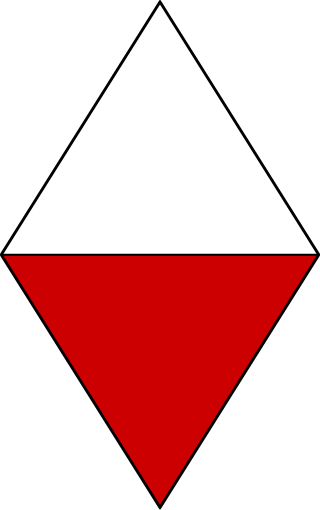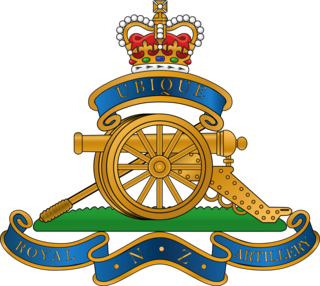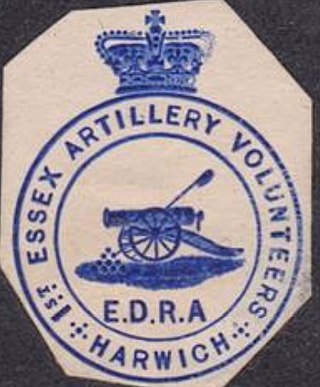
The 42nd Infantry Division was an infantry division of the British Army. The division was raised in 1908 as part of the Territorial Force (TF), originally as the East Lancashire Division, and was redesignated as the 42nd Division on 25 May 1915. It was the first TF division to be sent overseas during the First World War. The division fought at Gallipoli, in the Sinai desert and on the Western Front in France and Belgium. Disbanded after the war, it was reformed in the Territorial Army (TA), in the Second World War it served as the 42nd Infantry Division with the British Expeditionary Force (BEF) and fought in Belgium and France before being evacuated at Dunkirk. The division was later reformed in the United Kingdom and, in November 1941, was converted into the 42nd Armoured Division, which was disbanded in October 1943 without serving overseas. A 2nd Line duplicate formation, the 66th Infantry Division, was created when the Territorials were doubled in both world wars.

The Royal Regiment of New Zealand Artillery is the artillery regiment of the New Zealand Army. It is effectively a military administrative corps, and can comprise multiple component regiments. This nomenclature stems from its heritage as an offshoot of the British Army's Royal Artillery. In its current form it was founded in 1947 with the amalgamation of the regular and volunteer corps of artillery in New Zealand. In 1958 in recognition of services rendered it was given the title the Royal Regiment of New Zealand Artillery.

The West Riding Artillery was formed as a group of volunteer units of the British Army in 1860. Its units later formed the divisional artillery of the West Riding Division of the Territorial Force in World War I and World War II. The West Riding Artillery's lineage is continued in a battery of today's Army Reserve
The 4th Regiment, Royal Australian Artillery is an artillery unit of the Australian Army. Currently it provides close artillery support to the 3rd Brigade and is based at Chau Pha Lines, Lavarack Barracks in Townsville, Queensland. The regiment was raised in its current form in 1960 and is currently re-equipping with M777A2 lightweight towed howitzers. The regiment deployed during Australia's commitment to the Vietnam War and has subsequently deployed to Singapore and East Timor.
3rd Regiment Royal Horse Artillery is a regiment of the Royal Horse Artillery in the British Army. They are currently based at Albemarle Barracks, Northumberland, England.
XLIV (Howitzer) Brigade, Royal Field Artillery was a brigade of the Royal Field Artillery which served in the First World War. It joined the BEF in August 1914 before being broken up in May 1916. It was reformed as XLIV Brigade, Royal Field Artillery in early 1917, serving in Palestine and the Western Front before being disbanded after the end of the war.
The 7th Field Regiment, Royal Australian Artillery was an Australian Army Reserve artillery unit with its headquarters at Pymble, New South Wales, and was part of 8th Brigade until it was disbanded in early 2013.

The 11th Coast Regiment, Royal New Zealand Artillery was a territorial coastal artillery regiment of the New Zealand Army based at Godley Head. The regiment was formed in 1940 as 11th Heavy Regiment, New Zealand Artillery and controlled the coastal defence batteries around Lyttleton Harbour. The regiment was progressively expanded and by the end of the war had batteries all over the upper North Island. The regiment was reduced to a cadre in 1957 and disbanded in 1967, along with the other coastal artillery regiments.
205 Battery Royal Artillery is part of the 101st (Northumbrian) Regiment Royal Artillery and is equipped with the M270 Multiple Launch Rocket System. It is based in South Shields, United Kingdom.
The 103rd Medium Battery is an artillery battery unit of the Royal Australian Artillery. The battery was formed in 1916, known as the 103rd Field (Howitzer) Battery and served during World War I. Its successors have fought in the Indonesia–Malaysia confrontation and the Vietnam War and the battery is currently part of the 8th/12th Regiment, Royal Australian Artillery, based in Darwin, Northern Territory, as part of the 1st Brigade.
B Battery, Honourable Artillery Company was a horse artillery battery that was formed from the Field Artillery, HAC in 1899. It transferred to the Territorial Force in 1908 as artillery support for the South Eastern Mounted Brigade.
The Somerset Royal Horse Artillery was a Territorial Force Royal Horse Artillery battery that was formed in Somerset in 1908. It saw active service during the First World War in the Sinai and Palestine Campaign with the ANZAC Mounted Division from 1916 to 1918. A second line battery, 2/1st Somerset RHA, served on the Western Front with the 63rd Division from 1916 to 1918. It was disembodied after the end of the war and was not reconstituted in the Territorial Force in 1920.

The Leicestershire Royal Horse Artillery was a Territorial Force Royal Horse Artillery battery that was formed in Leicestershire in 1908. It saw active service during the First World War in Egypt and Palestine from 1916 to 1918, initially with ANZAC Mounted Division before joining the Yeomanry Mounted Division and 1st Mounted / 4th Cavalry Division. A second line battery, 2/1st Leicestershire RHA, served on the Western Front with the 63rd Division from 1916 to 1918. Post-war, it was reconstituted as a Royal Field Artillery battery.

The 1st Essex Artillery Volunteers was a unit of Britain's part-time auxiliary forces raised in Essex in 1860 in response to an invasion scare. It served under various designations as field artillery in Palestine during World War I. During World War II its units served as mountain artillery in Italy and as jungle artillery and medium artillery in Burma. Postwar it became an airborne unit until it was merged with other units in the 1950s.

The 1st Norfolk Artillery Volunteers was a unit of Britain's Volunteer Force raised in the County of Norfolk in 1859 as a response to a French invasion threat. It became part of the Territorial Force in 1908 and served under various designations as field artillery in Palestine during World War I, and as heavy anti-aircraft artillery in North Africa and Italy during World War II. It disappeared in a merger in 1955.

The 3rd West Lancashire Artillery was a volunteer unit of Britain's Territorial Force recruited from Liverpool that saw action during the First World War, distinguishing itself at the Battle of the Avre. During the Second World War, it served in the air defence and medium artillery roles at home and in the Far East. Its successor unit continues to serve as a battery in the modern Army Reserve.

The 2nd Field Regiment, Royal New Zealand Artillery was a territorial field artillery regiment of the New Zealand Army. It was originally formed as 2nd Field Artillery Brigade in 1921 and brought the independent batteries of the Wellington area under a single command. In 1940, the New Zealand territorial artillery brigades were redesignated as regiments and the former batteries became troops within new, larger batteries. During the Second World War, the 2nd Field Regiment remained in New Zealand for home defence as part of the 4th Division. After the war, the regiment remained a part of the territorial force until it was disbanded in 1964. The regiment was briefly reformed in 1982 to provide command support to 22(D) Battery, but was disbanded the next year.

The 1st Field Regiment, Royal New Zealand Artillery was a territorial field artillery regiment of the New Zealand Army. It was originally formed as 1st Field Artillery Brigade in 1921 and brought the independent batteries of the Auckland Area under a single command. In 1940, the New Zealand territorial artillery brigades were redesignated as regiments and the former batteries became troops within new, larger batteries During the Second World War, the 1st Field Regiment remained in New Zealand for home defense as part of the 1st Division. After the war, the regiment remained a part of the territorial force until it was disbanded in 1964.

The 10th Coast Regiment, Royal New Zealand Artillery was a territorial coastal artillery regiment of the New Zealand Army. The regiment was formed in 1940 as 10th Heavy Regiment, New Zealand Artillery and controlled the coastal defence batteries around Wellington Harbour. The regiment was progressively expanded and by the end of the war had batteries all over the lower North Island. The regiment was reduced to a cadre in 1957 and disbanded in 1967, along with the other coastal artillery regiments.

The 9th Coast Regiment, Royal New Zealand Artillery was a territorial coastal artillery regiment of the New Zealand Army. The regiment was formed in 1940 as 9th Heavy Regiment, New Zealand Artillery and controlled the coastal defence batteries around Auckland. The regiment was progressively expanded and by the end of the war had batteries all over the upper North Island. The regiment was reduced to a cadre in 1957 and disbanded in 1967, along with the other coastal artillery regiments.








